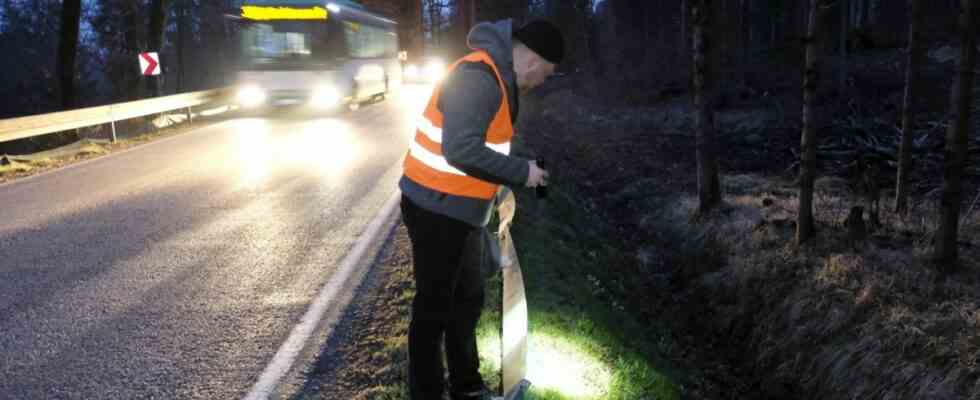Not only people have spring fever, but also animals – including amphibians such as frogs, amphibians and toads. As soon as winter is over, they are drawn back to the waters where they hatched to reproduce. This is life-threatening for them when they have to cross streets. Volunteers have been working in the district for many years to carry the animals across the roadways. Josefine Hopfes, who has been with the Federation of Nature Conservation is active, with the amphibian protection. She looks after collection points in Achmühle, Bergkramerhof, Meilenberg and Harmating.
The stationary frogs and toads find their spawning waters not only through known routes and their sense of smell, but also with the help of a special organ in the brain. Hundreds of animals often migrate at the same time to protect themselves from predators, such as cats or martens. The migration begins at dusk and can take several days as the amphibians can only cover about 600 meters per day. However, since the humidity is higher in the dark and thus prevents drying out, they move primarily at night. The toads often find a partner during the migration. In this case, the male is carried piggyback by the female to her destination. A few weeks later, the animals migrate back to the meadows and forests together with their young.
Josefine Hopfes from the district group of the Bund Naturschutz looks after the collection points in Achmühle, Bergkramerhof, Meilenberg and Harmating.
(Photo: Hartmut Pöstges)
In Achmühle, the main migration period begins on March 29th and ends on May 1st. Since 2012 there have been dug boxes to catch frogs and toads as they migrate along the amphibian containment fence. There they are then collected and transported to the other side of the street. However, Josefine Hopfes is dissatisfied with the implementation of this relief effort. The boxes are too far apart. Since the toads didn’t want to go the extra way, they found holes and leaks and crossed the road on their own, she explains. This is one of the reasons why the population has declined. An additional problem for them is the forestry company if it damages the fence: This would create new new gaps through which the amphibians can then slip and get onto the road. According to Hopfes, even fewer animals than usual were saved in 2020 due to the deforestation of the forest along the roadway. While more than 4,000 amphibians were still migrating in Achmühle in 2011, in 2021 there were only 614.
Some amphibians find their partner on the way to the spawning water.
(Photo: Hartmut Pöstges)
Achmühle is one of the most dangerous places for amphibians. Additional checks in the evening are intended to better protect the population and allow the population to recover. Ideally, according to Hopfes, there should be crates every 40 to 50 meters. The terrain looks very steep and the traffic is heavy. There is a speed limit of 50 kilometers per hour, as well as several road signs pointing out the amphibians. However, not all motorists seem to take this too seriously given their speed. In order to protect the toads more effectively, which are particularly often victims of road traffic due to their slow pace, a reverse migration fence has already been installed, which is also checked daily. This is how you want to minimize the risk. Wearing high-visibility vests, the volunteers check the impassable terrain every morning.

